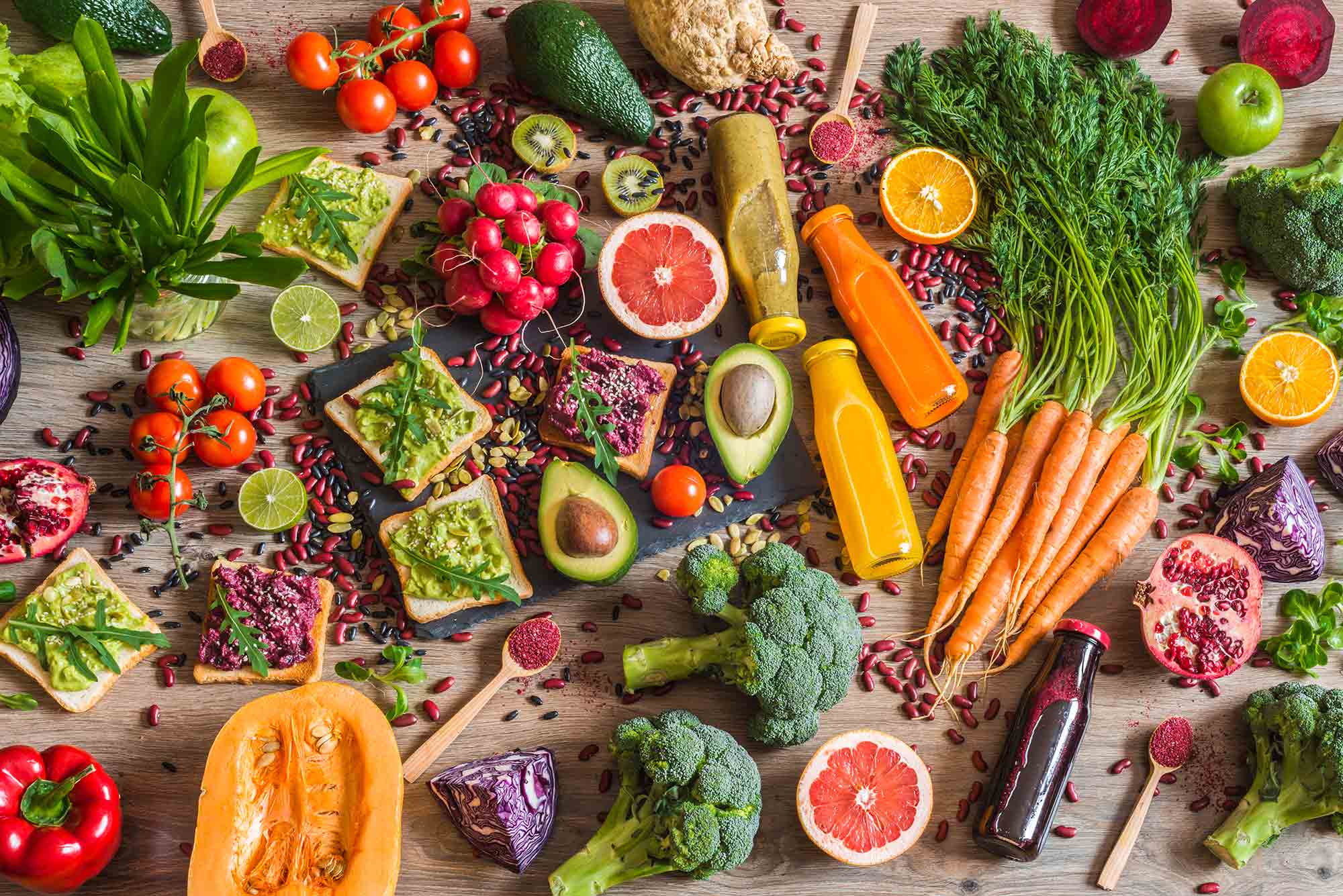An inside look from Chef Murray Hall of Dolce Hotels & Resorts on how to incorporate local and seasonal ingredients into group menus while balancing budgets — and creating flavorful, plant-forward vegan, gluten- and dairy-free dishes even meat-eaters will dig into.
When you live and work in Ontario, Canada, as Chef Murray Hall, Executive Chef/Food & Beverage Director at Dolce Hotels & Resorts, does, sourcing locally can be challenging. I recently sat down with Chef Murray to find out how he manages to incorporate fresh fruits and vegetables into his daily dishes while still keeping the menu budget-friendly for groups — and safe for those with dietary restrictions due to food allergies.
“Linking with local producers is key when it comes to making sure you get the freshest product around,” he said. This is especially key when you are designing a menu that is plant-forward and pleasing to flexitarians and vegan/vegetarians alike. Shopping locally, especially during the growing season in Toronto, also can result in better pricing, he added. Depending on the season, he can locally source rhubarb, strawberries and asparagus, for example, while citrus fruits often have to be sourced from outside of Canada.
“One of our farmer friends puts out a million heads of cauliflower broccoli each season,” he said, as well as pumpkins, gourds, zucchini and cucumbers. “It is exciting to go to the farm to see how this whole process works, and I also can buy from them directly. Especially with COVID-19, people want to know where the food is coming from. So if we can source it as locally as possible, then we’re going to have a lot more comfort level for people coming back into our restaurants, hotels and conference centers.”
Meeting planners are hesitant to ask if a hotel or convention center sources locally, as well as what their policies and procedures are for accepting food and beverage from farmers. Is that a legit question?
It’s very valid question to ask, but you might be surprised with some of the answers. For example, at some points through the course of the fall, spring, even sometimes early summer, I’ll have to say that the grapes may be coming from as far away South Africa. While as a chef I try to buy locally, the price still has to make sense — if a customer wants me to source an item locally that may not be in season, it may be more expensive, if we can get it at all. And some things you just can’t find locally. For example, I don’t even know where I can find locally sourced flour.
So it’s a good question to ask, but I wouldn’t use it as a decision point when it comes to whether or not you want to have a conference or meeting at that venue. You have to plan to be flexible with a few things, especially when you have a strict budget. If you say it has to be all locally sourced, but you can’t spend more than X, you’re tying the culinary team’s hands a little bit in their ability to make sure that they would be able to provide a great experience at the best price.
When I first started experimenting with plant-forward cooking, I had to go back to basics, which for me is French culinary cuisine — put a half a pound of butter on broccoli and it will taste delicious. Which is great but you can’t do that in this scenario, so I really had to go out and do a lot of research on how do you make broccoli taste great? How can you make a cauliflower taste great?
One thing we can do is use locally sourced products for a signature item. For example, we had a fantastic locally made birch-tree syrup at a property we opened in Indianapolis. It was delicious, and I couldn’t find it anywhere else but Indianapolis. For our breakfast meeting we had a maple syrup, a no-sugar syrup, butter, margarine, etc., but we also had this great local syrup that tied into the local market. So while maybe the grapes do come from South Africa, I’ve got a phenomenal condiment that is made down the street.
How can we add more vegetables into our meeting menus?
We’re really looking at making plant-forward more of a focus. It’s not just about putting out crudités and extra broccoli on a plate — how can I incorporate them into my homemade power bars, breakfast snacks, and break items? And also keeping in mind dietary restrictions and food allergies: Can we make a great vegan plant-forward muffin that everybody can enjoy? Anybody can go to a property and grab a carrot muffin, but can you get a carrot muffin that is nut-free, dairy-free and plant-forward?
I’m also seeing a trend toward making more healthy choices at breakfast: smoothies, berries, less starch, less fat, less pork, less bacon. People are also going lighter on lunch, with things like tofu bowls and vegan chili. If you’re still doing a plated meal for dinner though, they are looking for that animal protein option, whether that’s turkey or chicken or pork.
That being said, we did our first all plant-forward vegan, gluten-free, dairy-free dinner for one of our banquet applications for 200 people and it was a phenomenal event. At least half of the group was vegetarian, so we looked at the how to make the whole thing vegan.
And then we checked off all the allergies and dietary restrictions. I had 10 chicken dishes as the alternative option, which was crazy. We worried that we wouldn’t have enough, but we didn’t serve one chicken.
There was a group that did that earlier this year and they had a lot of people walk out — but maybe that’s because they didn’t communicate it in advance?
It’s important to be very upfront with people. I also would highly recommend having taste panel.
When I first started experimenting with plant-forward cooking, I had to go back to basics, which for me is French culinary cuisine — put a half a pound of butter on broccoli and it will taste delicious. Which is great but you can’t do that in this scenario, so I really had to go out and do a lot of research on how do you make broccoli taste great? How can you make a cauliflower taste great?
Also, a lot of vegetables are very heat sensitive. I can put a chicken breast under a heat lamp and it’s happy there for 10 minutes. But broccoli? It’s going to be brown and shriveled after three minutes.
How can I pull this dish together where I can make sure I’m serving it efficiently and effectively, but also make it as creative and fun as possible for the customer? And also something that a flexitarian meat eater is also willing to try?
A roasted plate of carrots is not going to be acceptable for a couple who paid $100 to come to this dinner.
I remember when I was an apprentice, a vegetarian/vegan dish was a steamer basket with a bunch of sliced, steamed vegetables with a little bit of peanut sauce. Now it is a complete paradigm shift where the vegan meal had better be as good or better than the animal protein meal.
Spicing can help. If you sauté Brussels sprouts the right way with olive oil and salt and pepper or some spices, everybody likes them.
Exactly, and that’s why I look to my spice toolbox. I’m experimenting a lot with nutritional yeast, which is a fantastic little powder of dried fermented molasses that creates umami and body for vegan sauces. But I also put this stuff on everything: steak, lasagna. Also, I have experimented with a lot with international spices because a lot of the vegetable-based cooking comes from South Asian countries. There’s a lot of great tried-and-true methods in those regions.
We’re really looking at making plant-forward more of a focus. It’s not just about putting out crudités and extra broccoli on a plate — how can I incorporate them into my homemade power bars, breakfast snacks, and break items?
When we do events, I start off by making sure the salad is vegan, gluten-free, and dairy-free right off the bat. That way, everybody’s getting exactly the same thing immediately, and it tastes amazing. I also look at doing a paradigm shift to making entrée options that are gluten-free and dairy-free. For example, instead of chicken, I can go into a tofu or a cauliflower steak. I can still make sure I have a quick swap out on my end to make that plate vegetarian or vegan. I also make sure I have enough information from planner right off the bat as well, so I have an idea of how many of those we’ll need.
And then dessert —we’re working with some companies that make phenomenal vegan, gluten-free desserts that are nut-free as well. That goes down great.
We can move away from keeping vegetarian dishes as a separate item at the bottom of the menu by really incorporating vegetables and fruit more thoroughly through our entire banquet and restaurant menus. That way, people can feel comfortable ordering what they’re looking for without feeling like they’re being separated out of the group for need special attention.
We let the planning team know that we have gluten-free, dairy-free, and nut-free options in our banquet package, which is important when it comes to allergies.
That’s super important. You don’t want to discriminate against people who have dietary restrictions.
Some restrictions are a little tough, like not having anything with oil. And a vegan diet tends to be very nut-centric, so I often connect directly with the customer to find out what we can do. Myself or one of my team will specifically make that meal for that person with full knowledge of their dietary or allergy concerns. We try to personalize it as much as possible.
What fruits or vegetables do you see really coming into its own on menus now?
I still think cauliflower is one of the big ones. It is very versatile: pastas, roasting, steaks, pizza doughs, deep frying. We make a fantastic vegan chicken wing out of cauliflower. The nice thing about cauliflower is that it holds up well; it absorbs flavors well and it doesn’t have a pronounced flavor by itself. It’s hard to infuse flavors into something that has its own very pronounced flavor, like turnips or rutabaga.
Also, root vegetables are still staples. Carrots have a lot of natural sugars, are being roasted very lightly with salt, pepper, and a little bit of balsamic vinegar. Brussels sprouts also are popular for roasting. There is really a big spectrum of vegetables to play with.
What about desserts? I hear some chefs are using roasted beets in their cakes to replace the sugar.
We’re not infusing a lot of vegetables in desserts; we’re looking more at using gluten-free flours, chickpea flours, coconuts, honey, maple syrup, natural sweeteners, agave versus white sugar and brown sugar — that more the scope that I’m playing with now. I have a great recipe for an azuki bean brownie that is completely gluten-free and vegan. It’s beautifully sweet, and it has a great density, but it’s light and fluffy as well.
“It is exciting to go to the farm to see how this whole process works, and I also can buy from them directly. Especially with COVID-19, people want to know where the food is coming from. So if we can source it as locally as possible, then we’re going to have a lot more comfort level for people coming back into our restaurants, hotels and conference centers.”
So what are you planting in your personal garden?
Actually, we have beets. We’re doing tomatoes, cucumbers, and squash. I’ve experimented with carrots, but I haven’t had much luck with that yet. Both my girls love peas as we have keep growing in the garden as well.
Fresh herbs also are fantastic. I love cooking with any sort of fresh herb, especially like cilantro, even parsley.
What are your favorite fruits and vegetables?
I fell in love with mangoes many years ago. And I love messing with cauliflower as much as I possibly can.
LISTEN to the interview with Chef Hall to learn more and hear directly from him about incorporating local and seasonal fruits and vegetables into group menus on the Eating at a Meeting Podcast:




